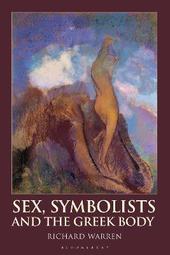
|
Sex, Symbolists and the Greek Body
Paperback / softback
Main Details
Description
This book explores Symbolist artists' fascination with ancient Greek art and myth, and how the erotic played a major role in this. For a brief period at the end of the 19th century the Symbolist movement inspired artists to turn inwards to the unconscious mind, endeavouring to unveil the secrets of human nature through their symbolic art. But above all their greatest interest, and fear, was man (and woman's) sexuality. Building upon the traditions of Academic neoclassicism, but fired with a new zeal, they turned back to Greek art and myth for inspiration. That classical legacy was once again a vehicle for artists to express their dreams, ideas and revelries. And so too their anxieties. For at times the frightening spectre of the sexual unconscious drove them to a new and innovative engagement with antiquity, including in ways never before tried in the history of the classical tradition. The unnerving sirens of Gustave Moreau, unearthly heroines of Odilon Redon, or leering fauns of Felicien Rops all played their role, among others, in this novel and unprecedented chapter in that tradition. This book shows how in their painting, drawing and sculpture the Symbolists re-invented Greek statuary and transposed it to new and unwonted contexts, as the imaginary inner worlds of artists were mapped onto the landscapes of Greek myth. It shows how they made of the Greek body, whether female, male, androgyne or sexual other, at once an object of beauty, desire, fear, and - at times - of horror.
Author Biography
Richard Warren is a research associate at Royal Holloway, University of London, UK. His Art Nouveau and the Classical Tradition (2017) explores how that movement's artists drew upon the inheritance of classical literature, myth, and art. He has also co-edited Graeco-Roman Antiquity and the Idea of Nationalism in the 19th Century (2016).
ReviewsThis book's collection of images and its linking of them to the erotic opens exciting avenues of exploration around questions of Symbolist reception and these artists' engagement of the ancient as a space to explore the cultural politics of sexual fantasy and the embodiment of desire. * Bryn Mawr Classical Review *
|